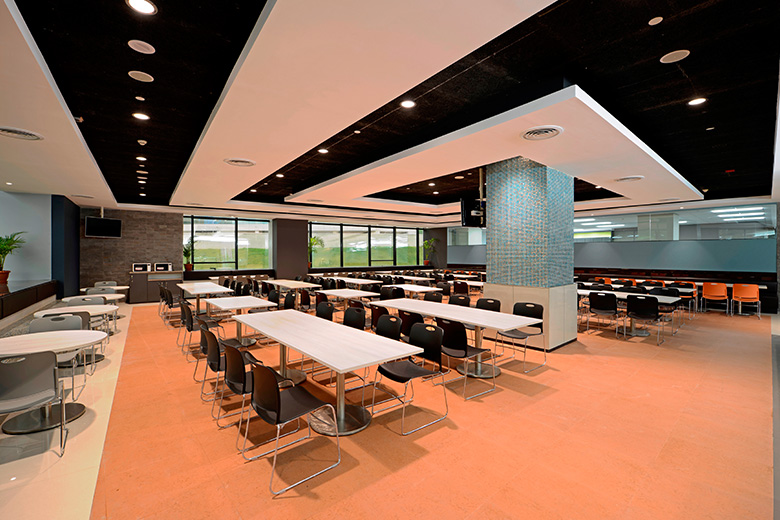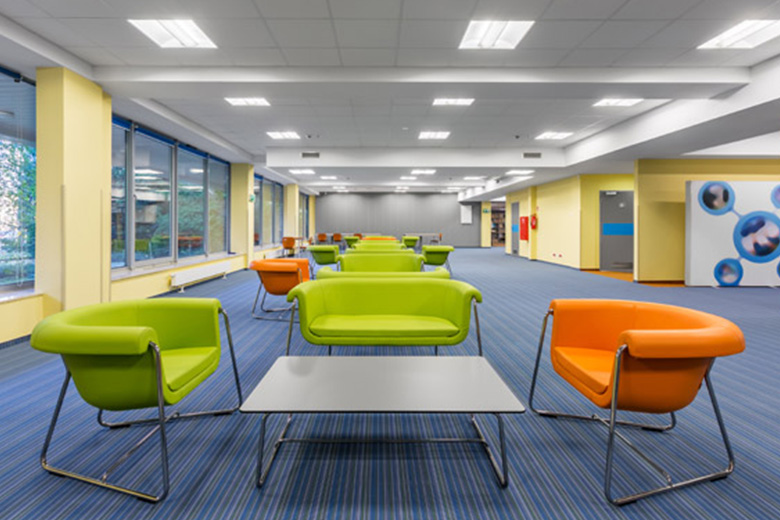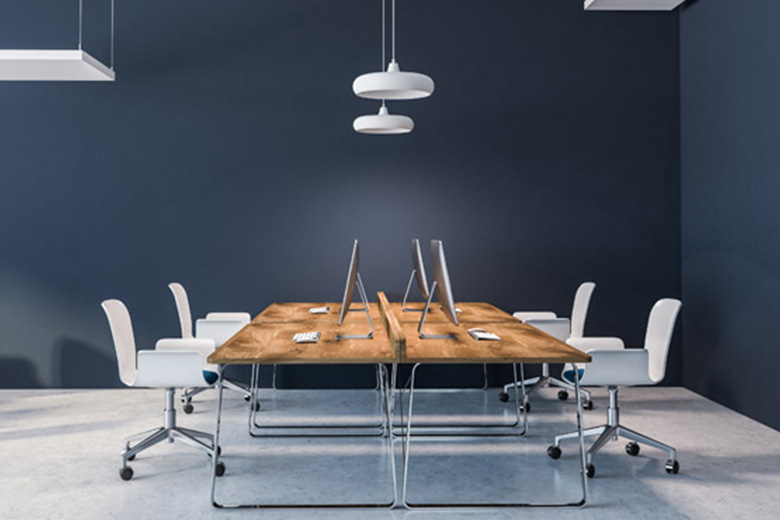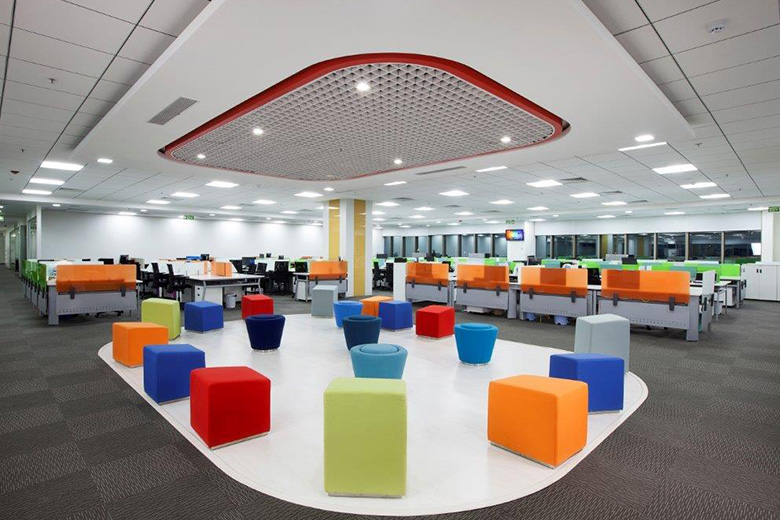
- Homeowners
- Professionals
- Products
- Back
- PlasterBoards
- Metal Framing & Accessories
- Jointing and Finishing
- Gypsum Plasters
- Ceiling Tiles
By material Type
By Category
- Resources
- About
- Careers
- FAQ's
Noise is the single greatest negative factor impacting work productivity in offices all across the nation. The constant external as well as internal noises keep disturbing the employees and don’t let them focus on the job at hand.
Recent studies indicate that noise pollution in offices is one of the main reasons that contribute to poor workplace productivity. Studies have also shown that trying to perform knowledge-based tasks in a densely occupied office space are difficult and productivity can be hampered.
Nowadays, offices are increasingly adopting a modern open-plan office design, providing a sleek and neat look to the interiors of workplaces. An open-plan office provides employees a space for creativity as well as collaboration. These offices allow one to work alone to focus on an important task or work with a colleague on a joint project without a lot of moving around.
Open-plan is the architectural and interior design for any floor plan which uses large, open spaces and minimizes the use of small, enclosed rooms such as private offices. However, research suggests as more and more offices adopt new open-plan and open cubicle interior designs, productivity of employees is on the decline.
According to a study conducted by the University of California, Berkeley, where 65,000 people from across continents were surveyed over the past decade, more than half of office workers are dissatisfied with the level of “speech privacy” leading to disruption in their work
The research also indicated that almost 62% of office workers face difficulty in finding privacy and space at work. Additionally, 57% of them do nothing to address the problem of noise in their workplaces.
While open plan office spaces are a great way for employees to collaborate and share thoughts and ideas, the acoustics of any workplace need to be well thought out as part of the initial design concept to prevent disruption in workflow.
Some of the common instances of workplace noise are:
As advancement in office space and design technology continues, it is possible for open-plan offices to harbour collaboration as well as reduce additional and unwanted noise. A good acoustic environment can improve task motivation by 66% and increase performance during tasks up to 50%, as per research conducted.
So what is the way in which offices can design their spaces which help in noise reduction, help improve employees productivity and look aesthetically appealing? Read on to know more:

The design should be made in a way that separates noise producing areas from noise sensitive areas. A simple example is meeting rooms should be separated from server rooms or cafeterias. This will also give the employees dedicated quiet spaces to discuss and carry forward important tasks at work. A quick and easy way to do this is by installation of gypsum boards. Gypsum boards are known for their noise reduction abilities and are easy to install without too much hassle.

In an office, informal conversations and meetings are very common in canteens and break spaces of the office. These spaces are often large and can have high soffits. In these instances, sound-absorbing elements of ceilings and walls work best. The most ideal solution known for its sound absorption abilities are gypsum board for partitions for partitions and gypsum false ceiling for the ceilings. It is also recommended to think about the location of the informal meeting spaces so they are not too close to activities that demand concentration
Multi-tasking
Responding to emails, preparing presentations along with the occasional phone conversations and discussing daily tasks across desks are all part of daily multi-tasking activities in an office environment. A sound-absorbing ceiling with good absorption qualities as well as sound-absorbing screens that help divide off sections in the office for groups are suitable for such situations. An aesthetic gypsum ceiling design and gypsum boards are easy and quick solutions for these partitions.

A project room needs sound insulation, a sound-absorbing ceiling with good absorption qualities at low frequencies, and wall absorbers. In a semi-open or open space you need a sound-absorbing ceiling with good absorption qualities at speech frequencies, and if people in adjacent areas can be disturbed, sound-absorbing screens are a good solution. For such quick meetings, small meeting rooms can be designed using gypsum boards along with a nice gypsum ceiling design for a good team meeting

Sound insulation, a sound absorbing gypsum ceiling design or free-hanging units, and gypsum boards that are good wall absorbers covering at least one wall, but preferably two adjacent walls should be designed and installed for a intense brain storming session to not disturb the others working in the office
Phone intensive
A sound-absorbing gypsum false ceiling with the best absorption qualities at all frequencies along with a good sound-absorbing screen dividing people into groups and wall absorbers where possible is ideal for a space that involves a lot of talking on the phone.

For both cellular offices and concentration spaces, one requires sound insulation, such as a sound-absorbing gypsum false ceiling and gypsum board wall absorbers on at least one wall.
Formal meetings
In order to hold constructive meetings in workplaces, it is important for everybody to be able to hear and follow each other as well as participate in discussions. However, it is also important to prevent the sounds of the meeting from spreading to others in the office.
Speech will often bounce off of hard surfaces creating echoes that obscure speech. Hence, a sound-absorbing ceiling with good absorption qualities for low frequencies and wall absorbers covering two adjacent walls such as gypsum boards or gypsum false ceilings would be beneficial. Moreover it is equally important to restrict the sound to pass on to adjacent meeting rooms and thus it is a good idea to have walls that are backed with insulation material.
For instances where it might not be possible for workplaces to make major changes to their internal design and architecture, sound absorbing materials such as gypsum boards can be introduced. These allow additional noise reduction without the sacrifice of interior design.

Hard flooring surfaces like natural wood, porcelain and ceramic add to noise in the workplace. While carpet is an ideal flooring solution for noise reduction, vinyl flooring is another alternative due to its ease in maintenance and variety of design options
Sound Friendly Furniture
Couches and lounge chairs, wall partitions, and filing cabinets can all have an impact on the acoustics of an open office space—especially high backed couches or enclosed booths that essentially separate a person from the rest of the room.
Global studies show that improvement in office design and structure for noise control in workplaces has resulted in up to 16% reduction in perceived disturbance in general and almost 11% reduction in cognitive stress.
As more and more offices both in India and overseas continue to adapt an open office plan layout, internationally accepted solutions for acoustics such as sound-absorbing ceilings, wall absorbers and sound-absorbing screens will become increasingly significant for better employee productivity.
More Articles